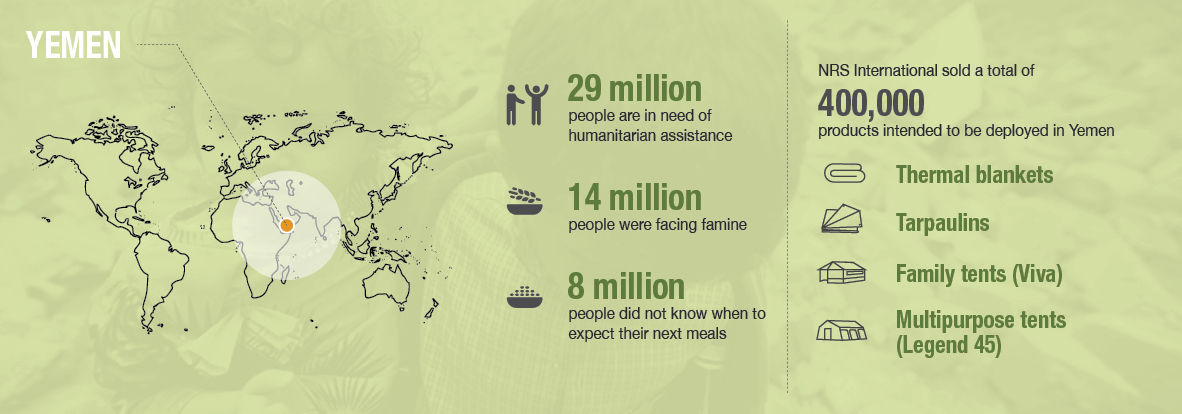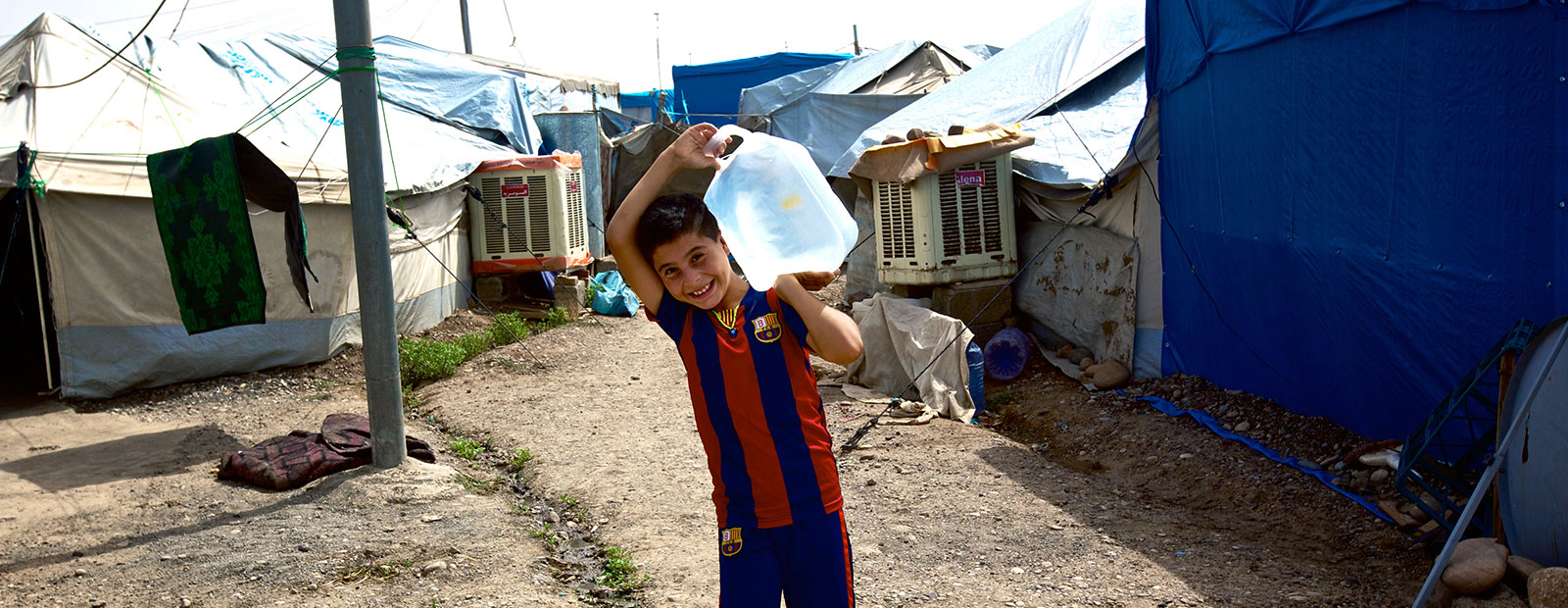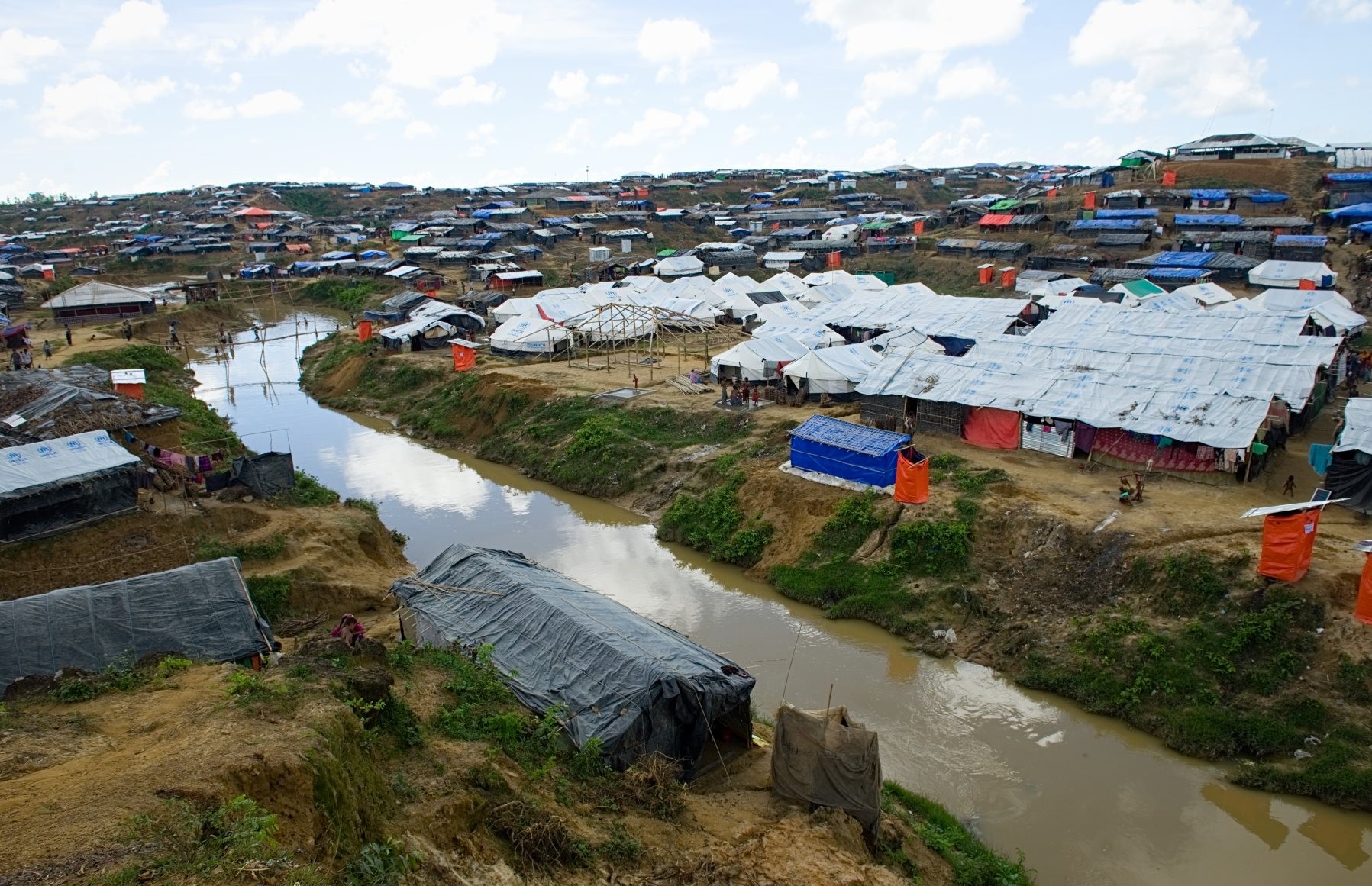Yemen
Type of response: Complex emergency
The unprecedented human catastrophe unfolding in war-torn Yemen has challenged the entire humanitarian system and supply chain, including suppliers. Despite strong funding commitments by the donor community, the delivery of aid to millions of people was one of critical issues faced by aid organizations and manufacturers like us. It required intense humanitarian diplomacy as well as new modus operandi from the supplier side.
Country at a glance
In the fall of 2018 the United Nations reported that 14 million people were facing famine and about 8 million people did not know where their next meal is coming from. Yemen is plagued by widespread violence, poverty, malnutrition and infectious diseases, resulting in the biggest global humanitarian crisis of this decade.

The conflict that has entered the fourth year has taken a tremendous toll on the 29 million people in need of humanitarian assistance. As of February 2019, peace talks in Sweden have resulted in a ceasefire, which will allow aid to enter the country.
Our response
The conflict destroyed public infrastructure and blocked access to basic supplies. With airports and seaports such as the Hodeidah port being affected, our operations team outlined the available shipping options to deliver cargo aid to our clients. Through a targeted email campaign, we updated our Middle Eastern clients about the transportation options by air, sea and land. At the time, we were able to offer air and sea options to the humanitarian hub in Djibouti, as well as to the Port of Aden and the Yemeni capital Sana’a.

This Rapid Response approach required ongoing monitoring and all shipping options were subject to change due to the ongoing developments and updated guidelines and restrictions as issued by international transport authorities. Our office turned into a ‘situation room’ and the involved team was closely following the developments. Overall, we have dispatched almost 400,000 core relief items in our reporting year, primarily blankets and industry standard tarpaulins. Our proactive communications approach was positively welcomed by our clients and partners and hopefully this year will we are able to send even more vital goods to the country that needs it the most.
Lastly, it is worth mentioning how we benefit from our strategic location in the humanitarian hub Dubai. Part of the supplier impact story is that, in many cases, we deliver goods to our clients’ warehouse facilities, from where the cargo will be dispatched to humanitarian hotspots. For instance, we work closely with Emirates Red Crescent, a key responder to the Yemen crisis based in the UAE. Since the start of the conflict we have delivered 8,000 family tents, which are now all deployed in the Arabian country. Similarly, in 2017 we produced 150 Legend 45 tents for WFP, which is based at International Humanitarian City in Dubai. These tents currently serve as field hospitals in Yemen.










